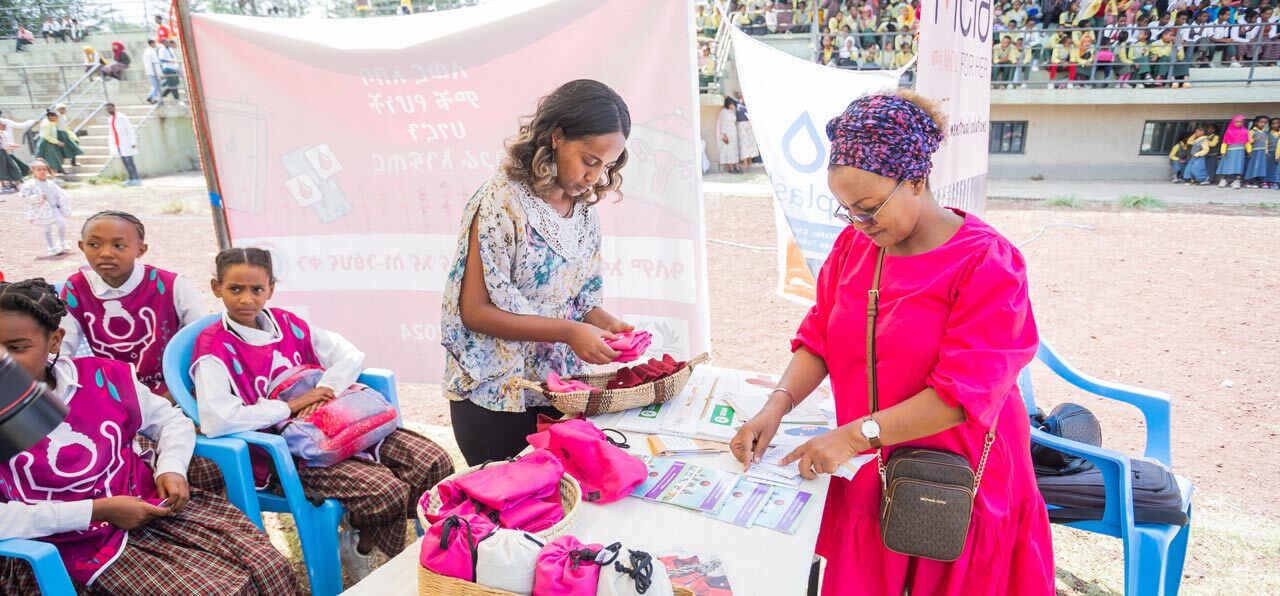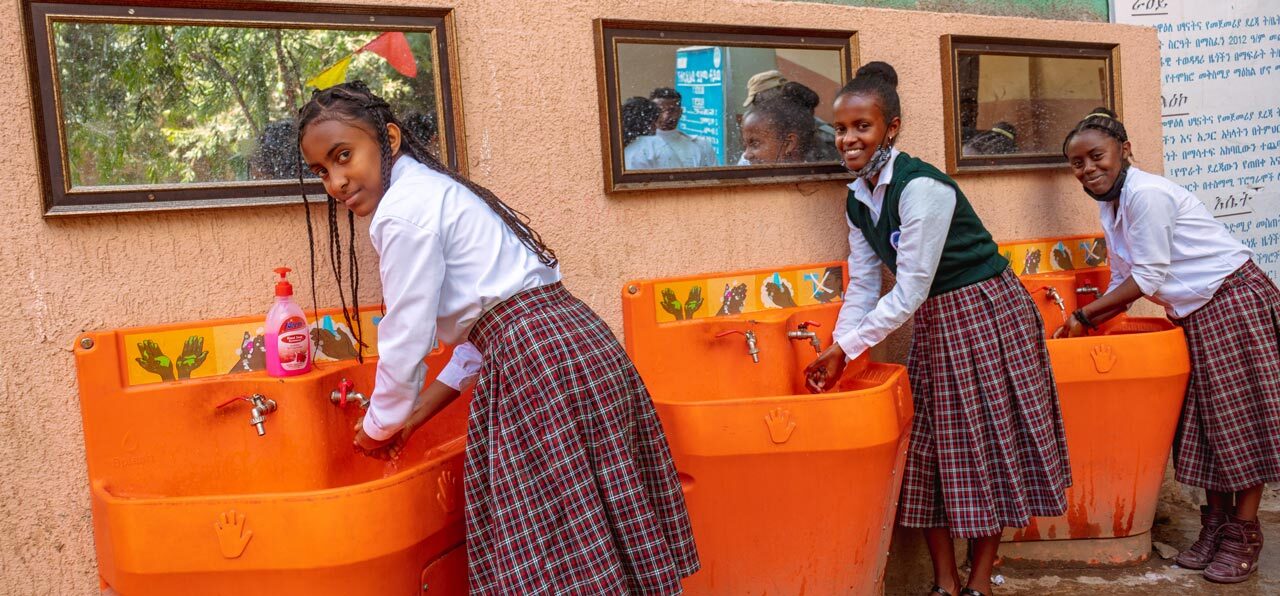Articles and information about Splash and the work we do.

May 27, 2021
Developing a Holistic Menstrual Health Program
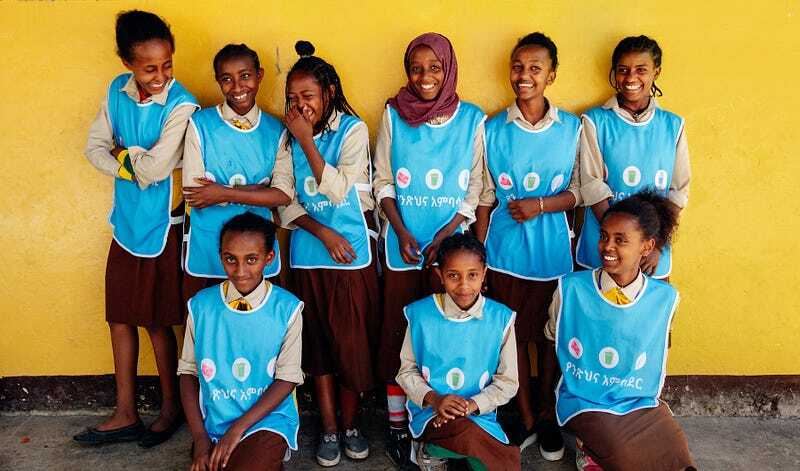

Menstrual Health… in WASH?
When someone says they work at a non-profit that focuses on WASH (water, sanitation, and hygiene), menstrual health may not be the first thing that comes to mind for most people. As an organization that takes the WASH+ approach, Splash considers our menstrual health (MH) program to be an integral part of our work in schools to improve children’s health and well-being, which is why it has been a component of our model for over eight years.
In recognition of Menstrual Hygiene Day, hear directly from our team as they share the genesis of Splash’s MH approach, the lessons we’ve learned, and our exciting plans for the future.
Where It Started
In the beginning, our MH program was a branch of our hygiene curriculum. Our primary goals were seemingly simple: to refute the common myths and misconceptions surrounding menstruation.
Initially, Splash solely focused on delivering age-appropriate education to children in primary and secondary schools to normalize periods, reduce stigma, and address common misconceptions. Our first iteration of the menstrual health program involved trainings on the practicalities of managing menstruation and maintaining personal hygiene. While we still have this girl-facing program at the core of our MH approach, we have expanded our horizons.
When we integrated sanitation into our overall programming in 2015, we specifically ensured sanitation facilities for girls would enable safe, hygienic, and discreet menstrual hygiene management.
What we have learned over the years of implementing and refining our program is that menstrual health is more than simply having access to information or receiving guidance around menstrual hygiene management; it requires involvement from everyone across the entire social ecosystem. Splash has recently spent more than two years taking a deep dive into an adolescent girl’s experience — unpacking the social norms, perceptions, and emotions that can accompany menstruation and puberty.
The Learning Process
As an organization that values people first, people second, and people third, the first thing we did to begin building this program was to sit down with those whose voice matters the most in this experience: girls.
We conducted focus groups, direct observations, in-depth interviews, human-centered design sessions, and demographic surveys — facilitating more than one hundred data collection events. In Ethiopia and India, we talked with girls (menstruating and pre-menstruating), boys, mothers, fathers, teachers, janitors, and school administrators to gain a comprehensive understanding of the MH landscape and map how each stakeholder contributes to the experience of young girls during puberty.
For menstruating girls, much of the experience they were willing to share focused around the challenges of managing personal hygiene during their period, often without safe, clean, and private bathroom facilities. They shared insight into just how challenging it has been to adjust to this huge life change, and even a sense of nostalgia for the carefree childhood they feel as though has been left behind.
“I used to play with my friend at any time like jumping a rope before I start to see my menses. But now, I’m not that much comfortable to involve in such playing if I’m on menstruation.”
—A young girl in Addis Ababa, Ethiopia.
Girls who had yet to start menstruating shared feelings of fear and apprehension, and they were often unaware of the changes that their body will undergo and how their role in family and social surroundings may change, too. These shared insights made one thing clear: girls feel as though they will face one of life’s biggest developments without the support they desire or need.
“Before I had my first period, I had no idea what happens when period comes. Even when I had pain, people always told me that it is for a while or that it might just be some bacterial infection or food poisoning.”
— A female student from Addis Ababa, Ethiopia.
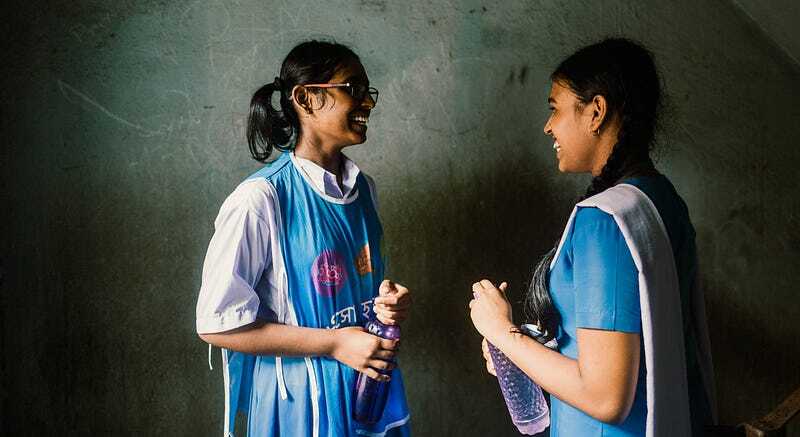
The Splash Approach
Teenagers and adolescents are at a critical point in their lives where confidence, self-efficacy, and sense of self can either be shaken or strengthened. By asking girls to share their lived experiences with us, we noticed that one of the primary gaps they were identifying was a lack of emotional support from the adults and peers in their life.
Parents
In response, Splash designed a program to equip parents with accurate information about menstruation, tips on how to discuss puberty with their children, and a community where parents can seek support from others who are going through similar experiences. We have continuously seen how traditional norms and beliefs have shaped the misperception of menstruation among older generations. Splash aims to redirect some of these beliefs by providing accurate information in a format and setting where culture and tradition are respected and there is no shame in showing up to learn.
Peers
It is no surprise that girls turn to friends for strength and support. We tapped into that sense of belonging and community by designing a peer mentoring program. In this program, younger girls are paired with older girls at their own school, go through guided discussions, and have the opportunity build relationships that provide the emotional support they need. These sessions help girls take this learned knowledge and actualize it in their own experience. At the end of the school year, mentees attend a final session where they are trained to become mentors themselves, creating a self-fulfilling cycle of mentorship.
Boys
Male peers also provide an opportunity for Splash to inspire a shift in the narrative around menstruation. With a global movement towards gender equity becoming part of the conversation, we have seen this begin to take root in the interactions between male and female peers. To support this, we have designed puberty workshops where boys learn about their puberty experience as well as valuable information about the female puberty experience to reduce misinformation and teasing while building compassion and knowledge.
“Last year, when I was in grade 7, I saw some male students teasing a female student by brandishing sanitary pads found from her purse to other class students.”
—Male focus group participant.
By building knowledge and creating gender equity champions, Splash hopes to foster more empathy toward girls and their puberty experiences among all students and adults.
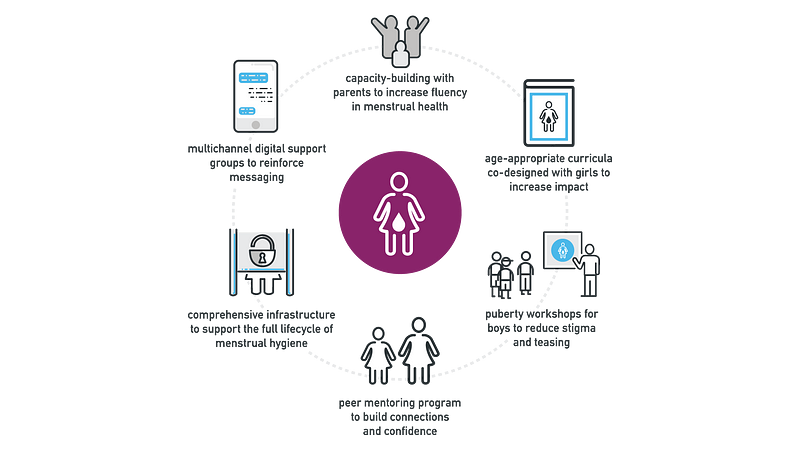
Hindsight and Horizons
When Splash set out to optimize our MH program, we did not initially realize the full range of stakeholders we would need to engage with to shift the narrative, address misinformation, and help build the social support girls need to thrive during puberty. This is not a stagnant process, and there is more road to travel as we continue to listen to girls and refine our programs.
We couldn’t do this work without the support we have received from an engaged community of people like you, and we are excited for what’s to come.
Where We’re Going
Our next challenge lies in digitizing all these program components without sacrificing the sense of intimacy of in-person delivery channels. We hope to program for tomorrow by building digital delivery channels and leveraging social media, online gaming, and influencer culture — interests of adolescents across the globe.
We have also learned a valuable lesson throughout COVID-19: when schools shut down, we can’t. Splash needs to keep reaching students to ensure they are supported during this critical development period. Remote education and digital engagement are the next frontiers for Splash, and we are excited to share more of that journey with you in the future.
